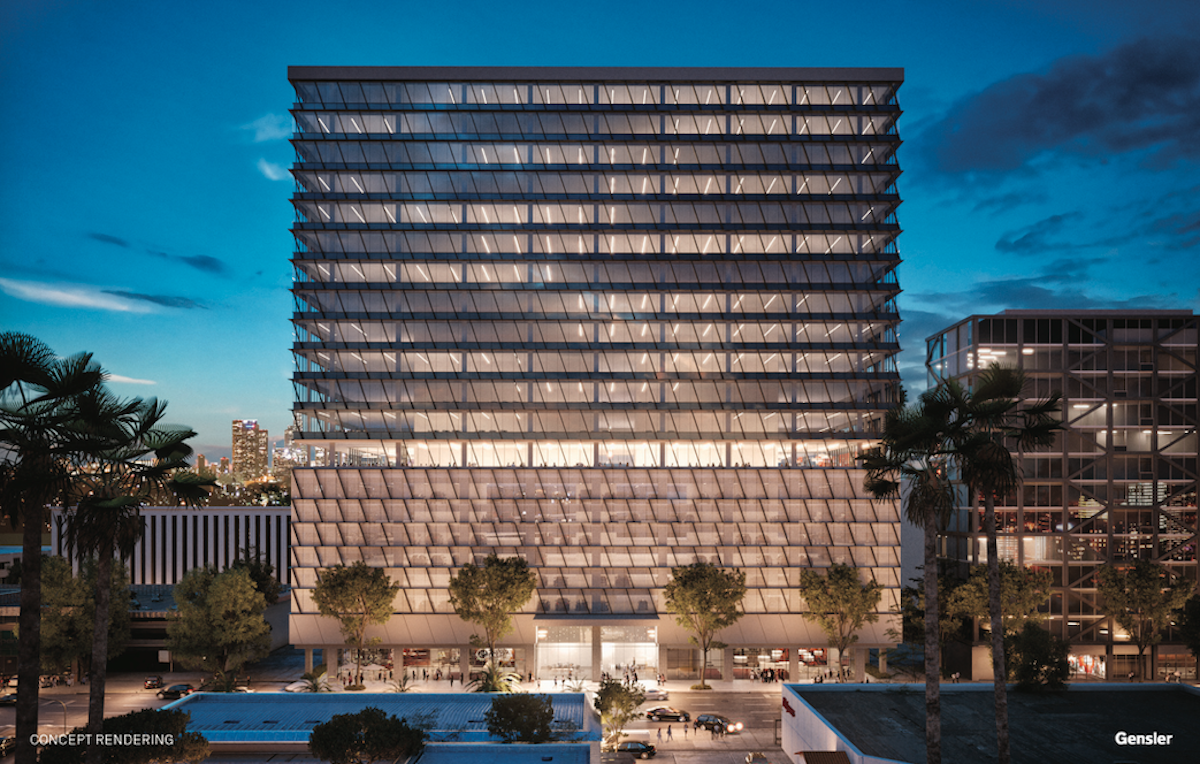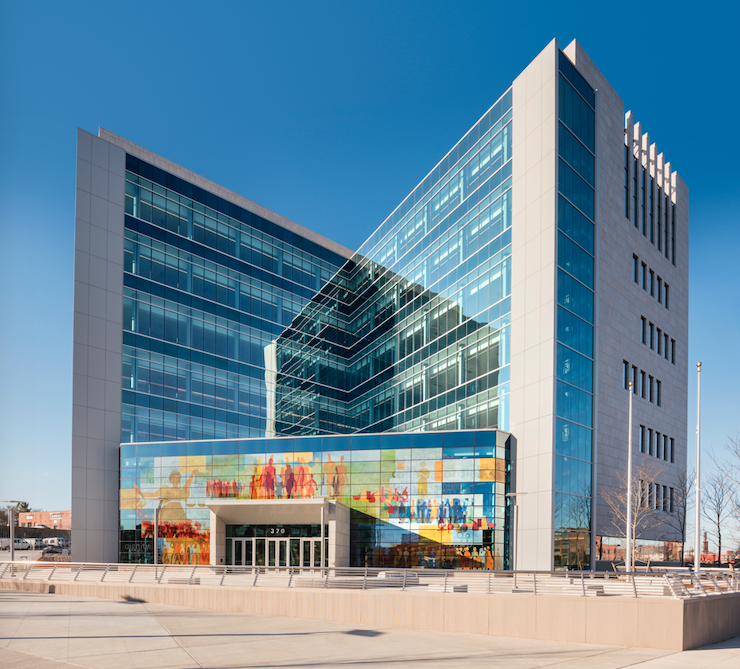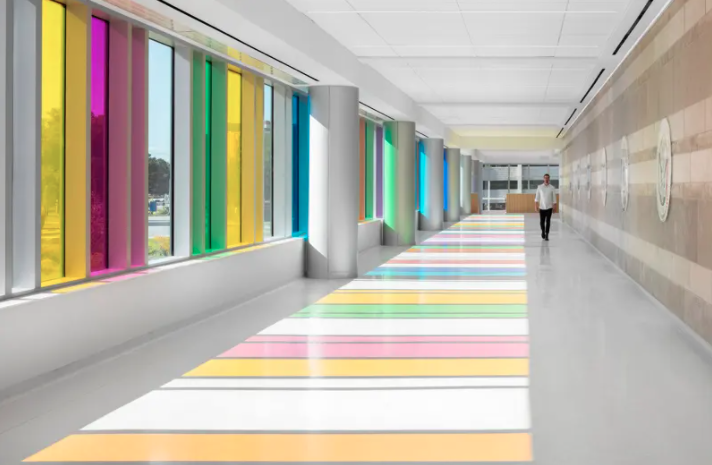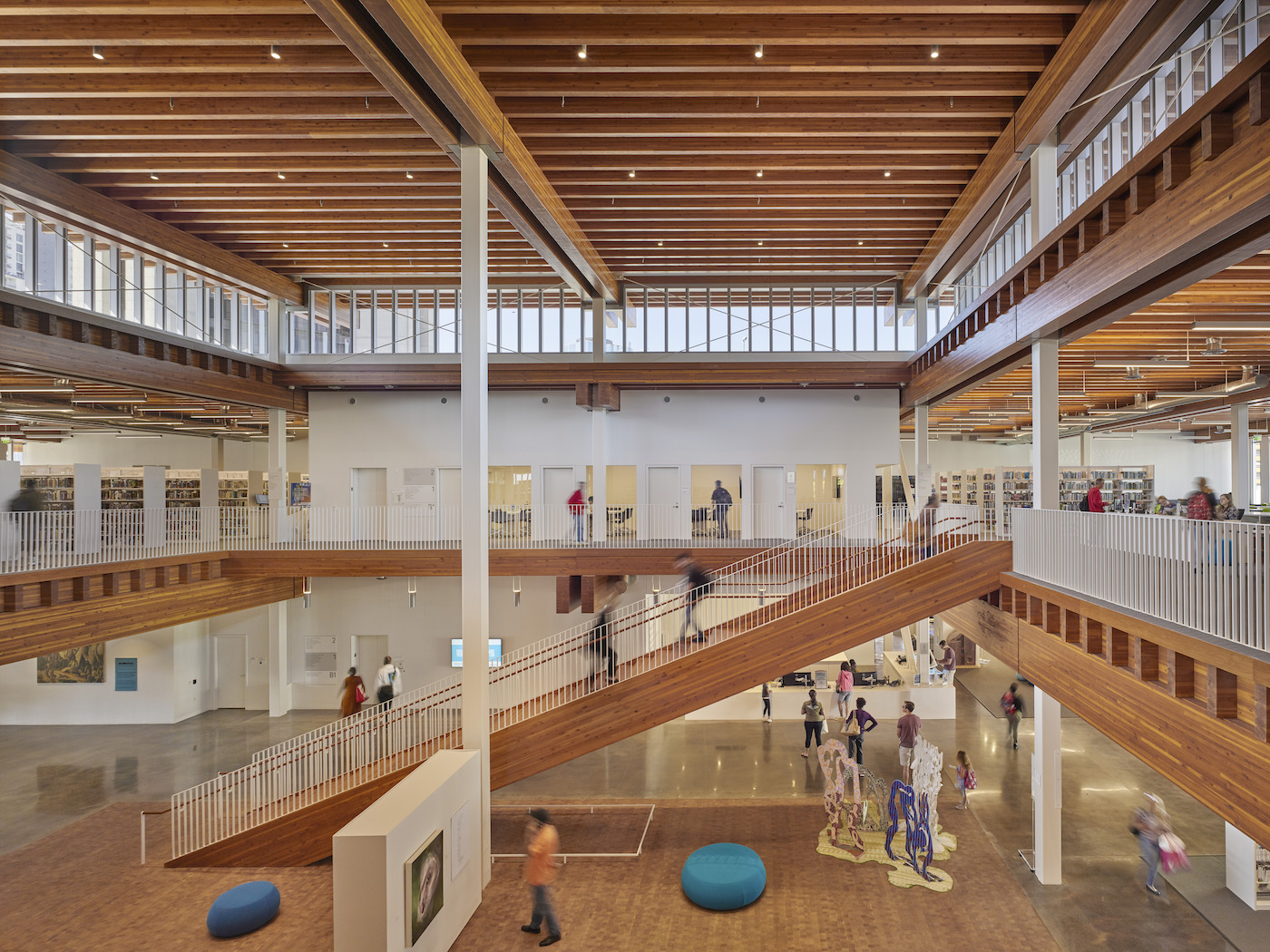During most economic downturns, the government sector “is a source of stability,” observes Bob Peck, Gensler’s Principal and Global Practice Area Leader–Government and Defense. Dave Barr, a Vice President with Burns & McDonnell’s Federal Group, agrees, noting that government, like manufacturers and utilities, “must continue to design, build, operate, and maintain systems and facilities to keep the country safe and functioning.”
But not since the Great Depression have such propositions been tested as they have been during the coronavirus pandemic. With tax revenue evaporating as a result of COVID-19-related business shutdowns, state budget shortfalls from this fallout could total a cumulative $555 billion over the states’ fiscal years 2020-2022, according to estimates from the Center for Budget and Policy Priorities.
Consequently, laments Peck, “it is hard to pin down long-term effects” on government construction spending.
AEC firms report that most of their federally funded projects have continued apace during the pandemic. These include the Army Corps of Engineers East Campus Building 2, a seven-story, 826,114-sf building in Fort Meade, Md., which when completed this fall will support more than 3,100 cybersecurity personnel. HOK and Clark Construction are key members of this $700 million project’s design-build team.

The Gensler-designed Vermont Corridor is a 21-story mixed-use building that will be the headquarters for the Los Angeles County Department of Mental Health and Workforce Development, Aging and Community Services. Rendering: Gensler
Projects funded by states or cities, however, are different stories, as those governments struggle with budget-balancing mandates. With less tax revenue being collected, “state- and locally-funded building projects are likely to be delayed, deferred, or cancelled,” say Edward C. Newman, PE, CCM, LEED AP, a Senior Vice President of Business Development for Hill International, and Michael J. Mologne, PE, CCM, a Vice President with the firm.
Conversely, they say the federal building market in the Mid-Atlantic states—one of Hill’s primary areas of activity—“looks strong” for the next 12 to 15 months. “Many federal buildings are in need of complete modernization, and several large projects are set to move forward in 2021 and 2022.”
Government buildings in an pandemic era
Stephen Lesser, Associate Principal at Arup’s Washington, D.C., office, notes that many government buildings—including courthouses, city halls, and embassies—are geared toward the public and visitors. “A number of these building types have security focused on protection from physical threats, but not necessarily the biological threat posed by COVID-19 within public-facing spaces.” Eric McConahey, a Principal in Arup’s Los Angeles office, suggests that the government might narrow the projects that get “early funding” to security, indoor air quality, and social distancing.
McConahey adds that on a state level, “we are seeing energy efficiency improvements to support carbon neutrality.” One example is the new Lowell Judicial Center in Massachusetts, a $180 million, 265,000-sf building that is one of three pilot projects Gov. Deval Patrick chose to assess the potential of being a zero net energy building.
Thomas McCarthy, AIA, Senior Principal at Page, says his firm’s outlook through 2021 is based on timing: “If procurement activity is not severely limited by site access, and a CR [Continuing Resolution] does not limit funding work into summer 2021, then we expect that the next 12-15 months will be robust. But those are two big ‘ifs.’”

Lowell Judicial Center is the largest of three pilot projects that Massachusetts Gov. Deval Patrick chose to assess the potential of becoming a zero net energy building. Photo: Finegold Alexander Architects
Page is collaborating with Flad Architects and WSP on a 160,000-sf High Containment Continuity Laboratory that will be part of the Centers for Disease Control and Prevention’s 2025 masterplan for its Roybal Campus in Atlanta. Construction is scheduled to begin early next year, with McCarthy Building Companies as the CM.
Skidmore, Owings & Merrill is not anticipating a huge slowdown in its government funded work. Its Director, Joseph Ruocco, AIA, says that projects from the Department of Defense have been “especially strong,” as have federally funded projects with the General Services Administration and the Department of State Overseas Building Operations. Even state-funded public buildings on both coasts are advancing through their design processes, says Ruocco.
SOM recently coordinated a petition statement to the World Health Organization promoting a collaboration with the design industry to develop guidelines that would prevent the spread of viruses. Its solutions, says Ruocco, include enhanced natural air ventilation and high-performance air filters, appropriate humidity control, and access to sunlight and UV light. “There is an immediate need to elevate our interior environments to higher standards,” he says.
Virtual solutions will reshape government buildings
On many projects, including those in the civic and government sectors, SOM has been evaluating what programs can be moved outdoors. These areas potentially include security processing in lobbies, public counters for business transactions at courthouses and consulates, jury assembly spaces, and collaboration spaces.
Ruocco also points out that during the pandemic, state and county courthouses have continued to operate through virtual proceedings. And for six days last May, the U.S. Supreme Court heard oral arguments via teleconferences for the first time in its history.
AEC firms agree that the pandemic has elevated the importance of technology to the design, engineering, and construction of government buildings. “We continue to incorporate and support the use of state-of-the-art systems, whether they support virtual jury selection, enhanced security, or training programs of government personnel,” says Bill Stinger, ASLA, LEED GA, Marketing Principal in HOK’s Washington, D.C., studio.
Technology is also becoming more present at the jobsite, especially now when the number of people working at once is being limited. Newman and Mologne at Hill International are seeing more interest among their government clients in virtual inspections. And Burns & McDonnell has successfully conducted design charrettes and review meetings virtually.
“Technology advances in how we communicate and collaborate have certainly minimized the impact to our design services,” says Barr. But he’s quick to add that the long-term impact of the coronavirus is still uncertain, especially the extent that social distancing will be enforced.
Gensler’s Peck observes that the government sector has been slower than others to embrace open and flexible workplaces. Indeed, federal, state, and local governments have been reducing their office footprints per employee. But Peck thinks those footprint-reduction mandates might be relaxed or even reversed to allow more space between workers. (He concedes that such a reversal might be countered by governments allowing more employees to work at home.)
Other trends for government buildings that AEC firms cite include a greater emphasis on health and wellness via better indoor air quality and touchless access. HVAC upgrades seem to be at the top of everyone’s to-do lists, too. And security will continue to be a priority for any government project.
ALSO SEE: New VA care center showcases the agency’s P3 approach to financing healthcare facilities

The 160,000-sf, three-story VA Ambulatory Care Center opened in Omaha, Neb., in August. This is the first of five pilot projects authorized to be built under the Communities Helping Invest through Property and Improvements Needed for Veterans Act, otherwise known as CHIP IN, which became law in 2016 and allows the cash-strapped U.S. Department of Veterans Affairs to use private investments to fund construction and real estate purchases. Read the story
Hill International’s principals say that sustainable design continues to be an important trend, and that there is more attention being paid to the building envelope, engineering, and related testing and commissioning. There is also an increased reliance on the construction manager at risk delivery method for larger projects.
HOK and Gensler, on the other hand, say design-build remains the delivery method of choice for government clients. Public-private partnerships are also being looked at more seriously, especially by cash-strapped states and cities.
One recent P3 project is the Gensler-designed Vermont Corridor, a tower with 13 office levels, seven parking levels, and ground-floor retail, that will be the new headquarters for the Los Angeles County Department of Mental Health and Workforce Development, Aging and Community Services. Trammell Crow, the county, High Street Residential, Meta Housing, and Public Facilities Group are redevelopment partners in this $302 million project, which is scheduled for completion in late 2021. (Hathaway Dinwiddie Construction is the general contractor on the project.)
The partners are also reviving two other sites along the Koreatown district’s Vermont Avenue, including a Steinberg Hart-designed adaptive reuse of an existing 12-story office building for 172 residential units and 4,700 sf of retail; and a Y&M Architects-designed 72-unit senior affordable housing complex with a 13,000-sf community center.
Related Stories
MFPRO+ News | Feb 15, 2024
UL Solutions launches indoor environmental quality verification designation for building construction projects
UL Solutions recently launched UL Verified Healthy Building Mark for New Construction, an indoor environmental quality verification designation for building construction projects.
MFPRO+ News | Feb 15, 2024
Nine states pledge to transition to heat pumps for residential HVAC and water heating
Nine states have signed a joint agreement to accelerate the transition to residential building electrification by significantly expanding heat pump sales to meet heating, cooling, and water heating demand. The Memorandum of Understanding was signed by directors of environmental agencies from California, Colorado, Maine, Maryland, Massachusetts, New Jersey, New York, Oregon, and Rhode Island.
MFPRO+ News | Feb 15, 2024
Oregon, California, Maine among states enacting policies to spur construction of missing middle housing
Although the number of new apartment building units recently reached the highest point in nearly 50 years, construction of duplexes, triplexes, and other buildings of from two to nine units made up just 1% of new housing units built in 2022. A few states have recently enacted new laws to spur more construction of these missing middle housing options.
Green | Feb 15, 2024
FEMA issues guidance on funding for net zero buildings
The Federal Emergency Management Agency (FEMA) recently unveiled new guidance on additional assistance funding for net zero buildings. The funding is available for implementing net-zero energy projects with a tie to disaster recovery or mitigation.
Hospital Design Trends | Feb 14, 2024
Plans for a massive research hospital in Dallas anticipates need for child healthcare
Children’s Health and the UT Southwestern Medical Center have unveiled their plans for a new $5 billion pediatric health campus and research hospital on more than 33 acres within Dallas’ Southwestern Medical District.
Architects | Feb 13, 2024
Pierluca Maffey joins Carrier Johnson + Culture as new Firmwide Head of Design
Carrier Johnson + Culture (CJ+C) has hired Pierluca “Luca” Maffey, International Assoc. AIA, as the firm's new Firmwide Head of Design and Design Principal.
K-12 Schools | Feb 13, 2024
K-12 school design trends for 2024: health, wellness, net zero energy
K-12 school sector experts are seeing “healthiness” for schools expand beyond air quality or the ease of cleaning interior surfaces. In this post-Covid era, “healthy” and “wellness” are intersecting expectations that, for many school districts, encompass the physical and mental wellbeing of students and teachers, greater access to outdoor spaces for play and learning, and the school’s connection to its community as a hub and resource.
Office Buildings | Feb 13, 2024
Creating thoughtful tech workplace design
It’s important for office design to be inspiring, but there are some practical principles that can be incorporated into the design of real-world tech workplaces to ensure they convey an exciting, sophisticated allure that accommodates progressive thinking and inventiveness.
Airports | Feb 13, 2024
New airport terminal by KPF aims to slash curb-to-gate walking time for passengers
The new Terminal A at Zayed International Airport in the United Arab Emirates features an efficient X-shape design with an average curb-to-gate walking time of just 12 minutes. The airport terminal was designed by Kohn Pedersen Fox (KPF), with Arup and Naco as engineering leads.
Higher Education | Feb 9, 2024
Disability and architecture: ADA and universal design at college campuses
To help people with disabilities feel part of the campus community, higher education institutions and architects must strive to create settings that not only adhere to but also exceed ADA guidelines.

















